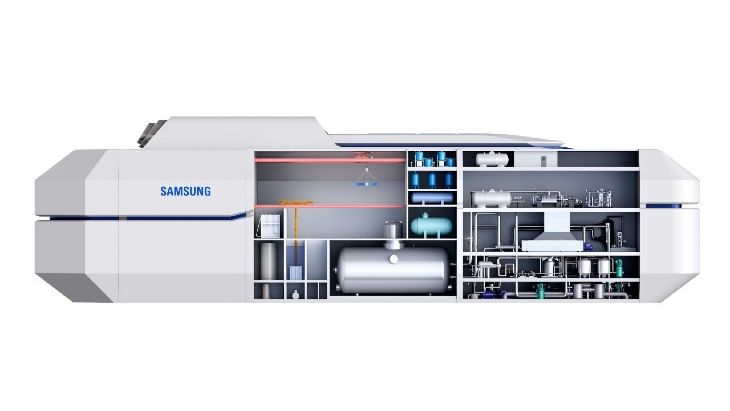The Nuclear Regulatory Commission (NRC) was among the many voices that have paid tribute to Anders following his death on 7 June when the vintage plane he was flying crashed into the San Juan Channel near Jones Island, north of Seattle.
Willam A Anders - Bill - was born on 17 October 1933 in Hong Kong. He was commissioned in the US Air Force after graduating from the Naval Academy with a Bachelor Of Science degree and served as a fighter pilot before joining NASA. He was also responsible for technical management of nuclear power reactor shielding and radiation effects programmes while at the Air Force Weapons Laboratory in New Mexico.
In 1964, Anders was selected by Nasa as an astronaut with responsibilities for dosimetry, radiation effects and environmental controls. He was the backup pilot for the Gemini XI, Apollo 11 flights, and was lunar module pilot for Apollo 8 which became the first crewed mission to orbit the moon in December 1968.
It was during the Apollo 8 mission that Anders took the first colour photograph of the Earth as seen from the Moon.
After Apollo 8, Anders served as Executive Secretary for the National Aeronautics and Space Council until 1973, when he was appointed to the five-member US Atomic Energy Commission. There, he was lead commissioner for all nuclear and non-nuclear power R&D. He was also the US chairman of the joint US/USSR technology exchange programme for nuclear fission and fusion power.
In January 1975, following the reorganisation of the US nuclear regulatory sector, he became the first chairman of the newly established NRC. He completed his term as NRC chairman in 1976, after which he became the US Ambassador to Norway.
"Chairman Anders had an illustrious career far beyond taking one of the most widely seen photos from space," NRC Chair Christopher Hanson said. "He was the only person to serve as Commissioner on both the Atomic Energy Commission and NRC and he served as the new agency's first Chairman, providing institutional continuity while unambiguously committing the agency to serve as an unbiased, independent, and open regulator. We are saddened by his death and extend our condolences to his family."
-730x570-(Nasa).jpg) Anders' iconic photograph became known as 'Earthrise' (Image: NASA)
Anders' iconic photograph became known as 'Earthrise' (Image: NASA)
Earthrise legacy
"In 1968, as a member of the Apollo 8 crew, as one of the first three people to travel beyond the reach of our Earth and orbit the Moon, Bill Anders gave to humanity among the deepest of gifts an explorer and an astronaut can give," NASA Administrator Bill Nelson said. "Along with the Apollo 8 crew, Bill was the first to show us, through looking back at the Earth from the threshold of the Moon, that stunning image - the first of its kind - of the Earth suspended in space, illuminated in light and hidden in darkness: the Earthrise.
"As Bill put it so well after the conclusion of the Apollo 8 mission, 'We came all this way to explore the Moon, and the most important thing is that we discovered the Earth'."
Earthrise was named one of the top photographs of the 20th century by Life Magazine. But according to NASA, Earthrise - and other photographs of Earth taken during the Apollo missions - helped spark the idea for a dedicated Earth-observing satellite programme leading to the Landsat programme of earth-observing satellite missions which has provided the longest continuous space-based record of Earth’s land in existence. Landsat data is used worldwide for research, business, education, and other activities.

.jpg)




_63865.jpg)
_18570.jpg)
_16159.jpg)





